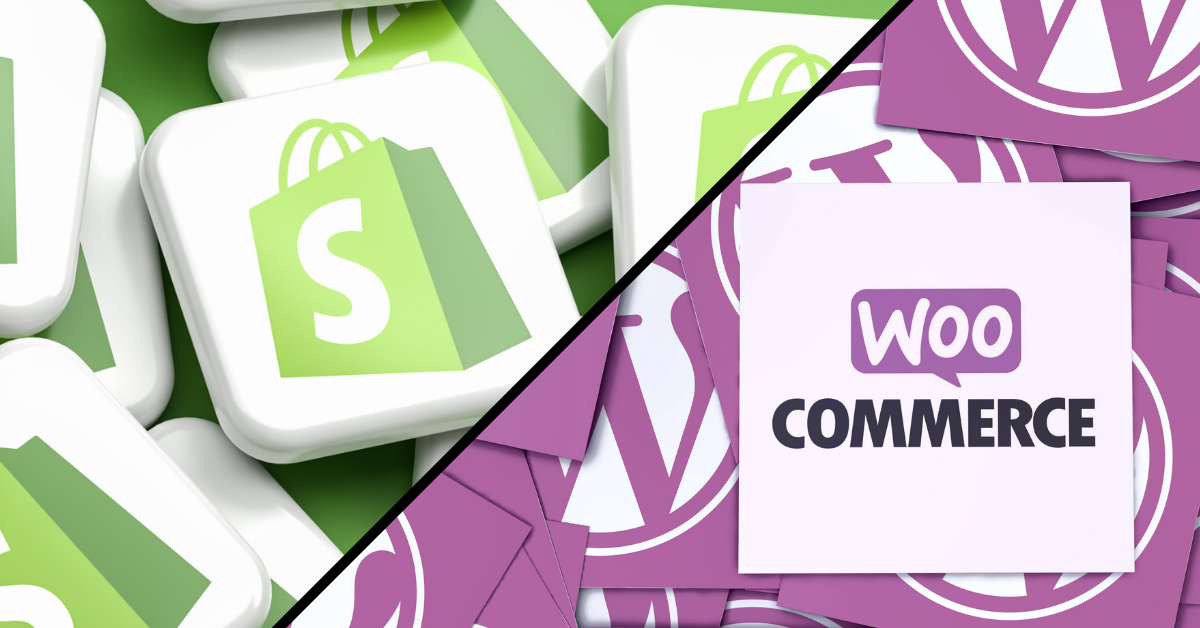
Shopify and WooCommerce are two popular eCommerce platforms utilized by small businesses. Both offer affordable options to start virtual stores, though each comes with limitations in customization and management. WooCommerce may be more complex to set up and manage, while Shopify is easier to use with fewer editing options, however, the WooCommerce WordPress plugin has advantages for SEO and future website development. Regardless of the platform chosen, optimizing WooCommerce & Shopify eCommerce sites for better performance and user experience is an important piece of the puzzle. These enhancements for user satisfaction directly influence sales and the success of the eCommerce brand.
OPTIMIZING SHOPIFY WEBSITES
SEO for Shopify websites involves enhancing technical performance, Product and Category SEO, and user experience (UX). This can include selecting fast-loading themes, compressing images, simplifying code, and using browser caching and a Content Delivery Network (CDN). On-page SEO refines product details and implements schema markup, while user experience optimization streamlines checkouts, integrates reviews, ensures mobile responsiveness, and manages plugins. Combining these strategies, optimizing Shopify sites can attract more visitors, boost conversions, and have a great chance to succeed in eCommerce.
TECHNICAL OPTIMIZATION
Making technical improvements to boost performance and user satisfaction can enhance optimization. This means that brands can choose a theme that loads quickly on different devices, compresses images and media files for faster loading times, and simplifies CSS, JavaScript, and HTML code to reduce page load times. Using browser caching and a CDN can help speed up loading by storing files locally and distributing content across servers worldwide. Lazy loading techniques can also be applied to delay non-essential image and video loading until it’s needed. While Shopify allows for easy management and customization, limiting the number of plugins is important, which can prevent speed issues and pull focus to user experience. Shopify’s revenue reporting dashboard also aims to keep track of performance metrics, keeping brands aligned with business objectives.

ON-PAGE SEO OPTIMIZATION
Optimizing product titles, descriptions, and meta tags on Shopify sites will get brands noticed through search engines and attract customers. Creating SEO-friendly URLs on Shopify may cost extra money, and although it is important, many eCommerce brands may find hiring a developer too expensive initially. Adding schema markup for snippets can also improve SEO, although Shopify’s default product page layouts are already optimized. Technical SEO can be very impactful for sites to switch a large number of SKUs. However, the ability for an SEO to make changes to potentially thousands of web pages (products) means the expertise required to make such changes is very important. Creating XML sitemaps and submitting them to search engines can help index all pages properly. Despite Shopify’s easy-to-use revenue reporting dashboard, fixing site speed issues requires careful management of plugins and a focus on improving user experience rather than adding unnecessary features.

USER EXPERIENCE OPTIMIZATION
When enhancing user experience on Shopify sites, it’s important to simplify the checkout process and include product reviews and ratings while avoiding complications from plugins and platform speed issues. Customizing navigation and search features should balance ease of use with Shopify’s user-friendly design, and personalized recommendations and upsells should integrate smoothly without overwhelming users. Although Shopify’s optimized product pages focus on mobile responsiveness and usability, careful plugin choices create a seamless shopping experience for customers on any device.

OPTIMIZING WOOCOMMERCE SITES

TECHNICAL OPTIMIZATION
Technical performance often requires balancing customization options and a fast and smooth website. While WooCommerce offers many plugins for WordPress, the lightweight and quick-loading themes aid in a seamless user experience. Using WordPress’s flexibility and optimization features, brands can speed up their websites by compressing images and media files. Adding caching plugins is also important for performance enhancement, given WordPress’s ease of use and optimization tools. Enabling GZIP compression format and browser caching can improve site speed and enhance user satisfaction. Although the initial setup of WooCommerce can be daunting, its adaptability stands out when integrating a CDN for eCommerce businesses needing more complex product configurations and global reach.
ON-PAGE SEO OPTIMIZATION
USER EXPERIENCE OPTIMIZATION
Businesses can improve user experience with WooCommerce by simplifying the checkout process to boost conversions. Combat challenges in plugin integration by incorporating product reviews and ratings, building trust, and aiding in consumer decision-making. Though initially complex, enhancing navigation and search functions creates an easy product discovery. Personalizing product recommendations can drive engagement and sales, showing the flexibility available to WooCommerce online shops. Mobile responsiveness can also widen audience reach and provide seamless shopping experiences.
COMPARISON AND BEST PRACTICES

Aspect |
Shopify |
WooComerce |
| Target Audience | Ideal for traditional ecommerce products like clothing, jewelry, skincare treatments, etc. | Suited for selling complex customizable products requiring configurations at purchase time. |
| Ease of Launch & Management | Effortless setup and management; requires little effort to launch and manage. | Requires more effort for setup but offers greater customization and control. |
| Customization Options | Limited customization options, suitable for those who prioritize ease of use. | Highly customizable, ideal for those who prioritize styling, branding, and layout. |
| Cost | The monthly subscription fee starts at $29/month. | It is mostly free, making it a cost-effective option for those on a tight budget. |
| Reporting & Analytics | Provides clean reporting on product performance, revenue, and traffic activity. | Offers detailed analytics and reporting capabilities for tracking business metrics. |
When comparing Shopify and WooCommerce, the choice depends on the products sold. Shopify suits traditional e-commerce items with easy management but limited customization, while WooCommerce is better for customizable products needing configurations at purchase. Shopify launches quickly with minimal effort, while WooCommerce prioritizes styling and branding. WooCommerce is mostly free for cost-conscious businesses, whereas Shopify offers detailed reporting on product and revenue performance. Creating business objectives for your brand’s eCommerce shop preferences, target audience, and products will help you choose the right shopping platform.
Brittany Degnan
Author

Need Help With Your Digital Marketing?
Related Articles
Strategies for Small Business UX/UI Website Design
Designing a website for a small business starts with understanding who your audience is and what they like. By analyzing how users interact with a website, businesses can ensure that the website is easy to use and captures attention. This thorough approach to...
WiT Group Named Spring 2024 Clutch Global Award Recipient
WiT Group is thrilled to announce our Spring 2024 Clutch Global recipient recognition. This achievement wouldn't have been possible without our clients' unwavering support; we are immensely grateful. The Clutch Global awards, which are based on the volume of reviews...
WiT Group Named Clutch 100 Fastest Growing Company 2024
WiT Group earned recognition as a top 100 fastest growing company in 2024 by Clutch. Clutch, the leading global marketplace of B2B service providers, released its list of the top 100 fastest-growing companies with the highest revenue growth rate from 2022 to 2023.This...
Stay Up to Date With The Latest News & Updates
Join Our Newsletter
Stay up to date with the latest news and marketing tips!



Recent Comments